Home
Repair And Restoration
CB500X Poor Starting
Job Date - The Weeks leading up to 1 June 2024
By Ren Withnell
The CB500X, now at 42,000 miles, isn't starting as sharply and keenly as I'd hope. Ever since I got this one and the previous CB500X it's always been "kft kft brum" on the button. Recently it's been more "kft kft kft kft kft brum... kft kft kft brum brum kft brum" with various shades of better and worse. In fact a couple of times I wondered if it would start at all. It always has got going, but not keenly. Once running it runs and rides absolutely fine.
Oh what did we do before the internet? A google search leads me initially down the paths of bad fuel, failing spark plugs, dodgy coils, low compression, valve seats and a myriad of expensive engine-out problems. I'm sweating like a movie hero disarming a nuclear device. That's it. I'm getting an electric car. I hate engines. In fact no I'm going to use public transport and a bicycle. I'm renaming the blog Buses And Travels.
Then I come across a forum for CBR500Rs, same engine, same bike actually just different clothes. It'll be the neutral switch, the switch that's on the engine that lights up the neutral light on the dash. Say whaaaaaat?!?
I'm sure most readers know but just in case. On most (not ALL) motorcycles with a neutral light on the dash this light comes on when in neutral yeah? Genius. On most (not ALL) motorcycles the negative feed to the neutral bulb comes from the neutral light switch making contact with the selector drum in the engine when the selector drum is in the neutral position. I need a drawing...
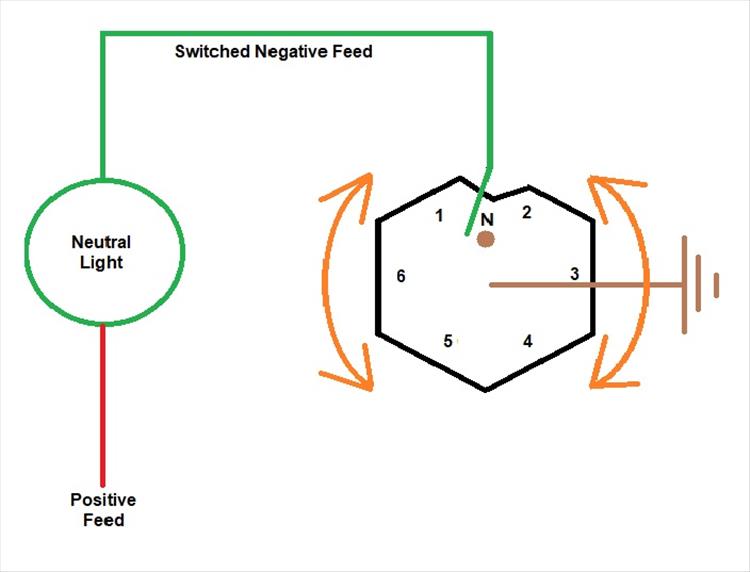
Drum rotates to neutral, connection is made, neutral light comes on. Simples
But what has that got to do with starting? Even in the good ol' days before computers and fool injunction, as a "safety feature" the bike would need to be in neutral (or clutch in stand up) before the starter would spin. Please note there are variations on this - some bikes ALWAYS need the clutch to be in, some bikes will not start with the stand down, some bikes will crank but not start with the stand down... and so on.
As such the neutral switch at the selector drum not only puts the neutral light on it also (via various techniques) completes the circuit to the starter to crank the engine. On a modern computerised motorcycle this same neutral switch also tells the computer if the motor is in neutral. This is important in the case of my CB500X. The image below is a HUGE oversimplification of how the CB500X is wired.
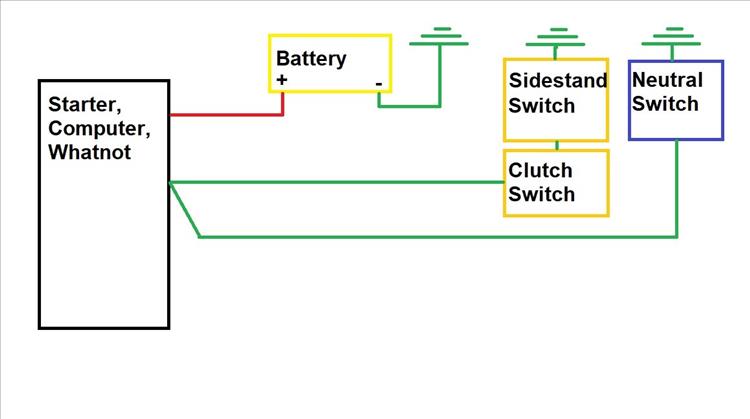
The starter AND computer receive a neutral from either the sidestand and clutch switches - or the neutral switch
As you can see above the starting system and computer needs a negative feed. This feed can EITHER be from the neutral light (the bike is in neutral it's safe to start) OR the clutch needs to be in and the side stand needs to be up (clutch in stand up safe to start).
Hang on a minute. This post on the forum suggests there's a problem with the neutral switch. The massively oversimplified drawing I have created above tells me I can bypass the questionable neutral switch by simply ensuring the stand is up and the clutch is in. I see an experiment coming on.
Over the next couple of weeks I make a concerted point of noting when I start the bike in neutral, no clutch and stand down, then in gear, clutch in, stand up. It always starts, but it starts noticeably sharper with the clutch in and the stand up. This suggests I have confirmed the source of my poor starting issues.
With the benefit of hindsight it's all starting to make sense. The poor starting is intermittent, usually in the mornings and after not being used for a few days. Well this is when I'm likely to start it on the stand in neutral as I'm locking the gate behind me. When out and about and being lazy I tend to stop the motor with the side stand, jump off, do whatever, jump on and start it in gear - stand up, clutch in - giving good starts.
There's comments on the forum, as ever. One suggests the problem is the very thick copper sealing washer used on the neutral switch. I can imagine the length of the switch and the washer versus the position of the selector plate is critical. If the switch it too close it'll interfere with the rotation of the selector plate, if it's too far away it'll never make contact with the selector plate.
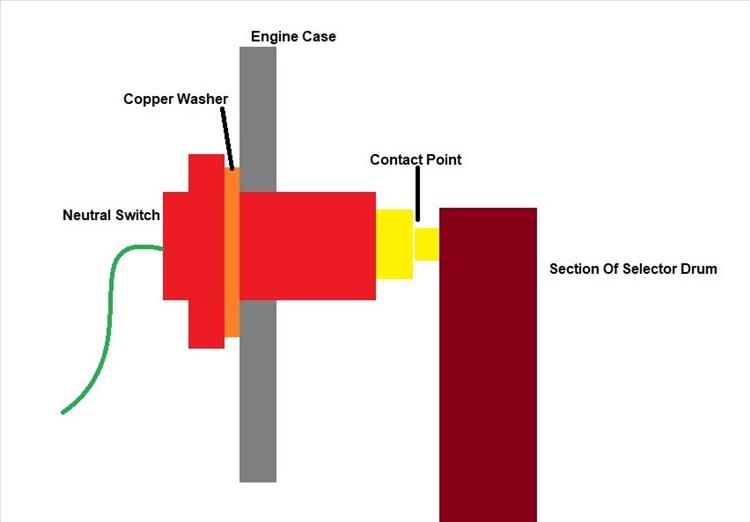
Hopefully you can see how the thickness of the copper washer may make or break the contact.
I remove the neutral switch and take note of the washer's thickness. I find a SLIGHTLY thinner washer, clean it, anneal it (heat it on the gas stove till it glows orange which "softens" the copper) and refit the neutral switch with the slightly thinner washer. Note - don't go too thin on the washer - the switch may crash into the selector drum.
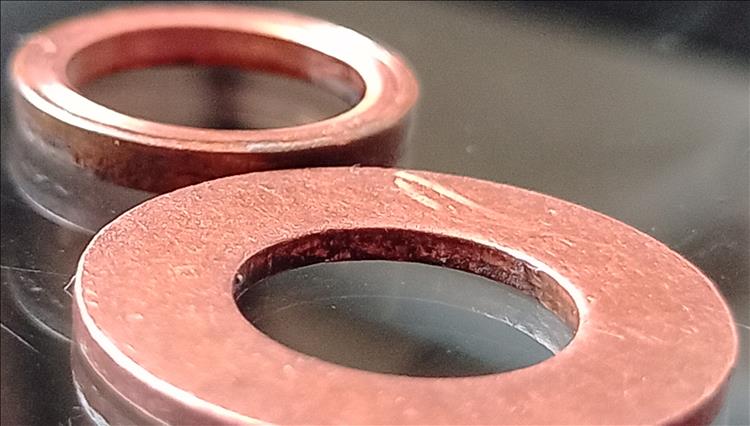
It's less than 0.5mm thinner my new washer.
It's now been 3 weeks since I've done this and the bike is starting like a champ once more. A pattern neutral light switch is only £11. I have purchased one and put it in my CB500X Spares drawer, just in case like.
Advertise here - contact ren@bikesandtravels.com
Reader's Comments
nab301 said :-
Interesting , it takes CBR owners to sort out technical issues ! Seriously though I'm curious , was the neutral light lighting when you had a no start? And it's strange that the motor would eventually start, no matter , you're sorted , that's the main thing!
Nigel
01/07/2024 19:39:57 UTC
Ren - The Ed¹ said :-
Yes the neutral light was working just fine nab301. I *think* we're into the dark arts here. You, myself, and probably others view electrical circuits in a rather binary format. 0 or 1, on or off, working or not working. I am terribly guilty of this.
Think resistance, think not 12v or 0v, think 3 or 4 volts. Let me speculate here, wildly. I imagine the computer trying to send 12v pulses to the coils and the coils shunting them up to say 24,000 volts. I imagine some random resistors and capacitors and mosfets expecting 12v and a good solid earth. But the earth is not solid, it's vague. Rather than reaching 12v and ground it's reaching 12v and 8v. I can imagine the coils only getting 4v and stepping up to 8,000 volts.
It's is painfully obvious I don't know how complex electronics work, but I know enough to know it's not always black and white. Perhaps someone will explain, but for now all I can say is... it works better with a good ground.
Oooh, maybe the neutral light sucks up all the good ground available and the computer is left floundering. O hell what do I know.
01/07/2024 20:10:44 UTC
Upt'North ¹ said :-
But why would this take 42,000 miles to show up.
Have you compensated for poor electron flow through a bad earth etc by strengthening the signal at its source?
Or is the neutral indicator failing and you have stirred things up by placing it closer to the drum?
But, if it works it works.
Upt.
02/07/2024 08:03:57 UTC
Bogger said :-
You used a new/another copper washer?? Good grief man, they cost good money. New? New! What's the world of bikes and travels coming to.
I'm surprised, no shocked, aghast even, that the original washer was not filed down to the correct thickness. Or more importantly, to save the file from wear an tear, to of rubbed the washer on the nearest kerb.
You really need to get a grip on not squandering your finances young man.
Bogger
02/07/2024 09:43:57 UTC
Ian Soady¹ said :-
If you had a vernier calliper then you could have used the depth gauge feature to find out exactly how thick your washer needed to be without the trial and error. But I expect the hole it goes into is in some totally inaccessible place.
Interestingly my last fiasco on the little Yam was due, I think, to the connector which links the pulser coil and the neutral light to the ignition control unit making poor contact. The neutral light wouldn't come on but headlight etc were shining brightly. Not being used to these newfangled things I didn't realise that my bike is wired similarly to your diagram so possibly I could have got it started with clutch pulled and prop stand up. Never mind I had a nice coffee at the pub I fortuitously stopped outside while waiting for my chauffeur driven lift home.
Furious jiggling and spraying with contact cleaner seem to have sorted it out. Now what will go wrong next?
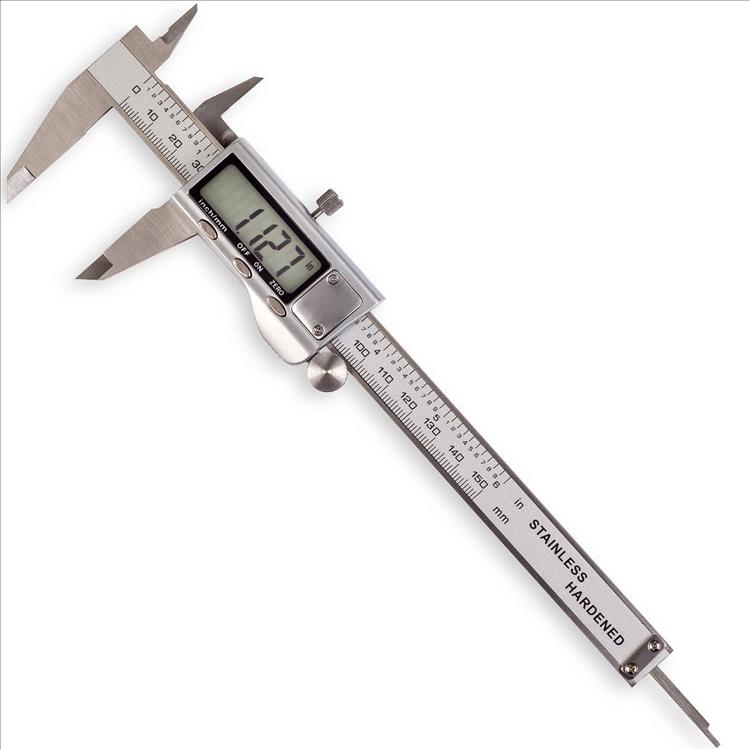 02/07/2024 10:12:45 UTC
02/07/2024 10:12:45 UTC
Ren - The Ed¹ said :-
Right.
Up't, why 42,000 miles? I'd envisage the contacts being worn away with time. The contact within the neutral switch is spring loaded so as the brass contact wears away the spring pushes it forward to take up the slack. Perhaps the neutral switch's contact has worn to it's maximum extension. Putting in the thinner washer has extended this. HOWEVER if the contacts are wearing at this rate I feel it is prudent to prepare with a new neutral switch.
Bogger - I already had the thinner washer in stock, in the drawer of screws, nuts, bolts, washers etc. No money was harmed in the acquisition of the washer. HOWEVER yes my wallet took a severe beating getting the new neutral switch. See above as to my reasons for allowing such a terrible, awful tragedy to happen.
Ian - I have a vernier calliper as pictured save for mine being "manual" not "digital", old skool. I didn't need to be so accurate, a "bit thinner" is sufficient.
02/07/2024 11:29:34 UTC
Upt'North ¹ said :-
Please excuse my ignorance leader.
So the neutral indicator actually makes contact with the drum?
I wasn't aware and if that is the case I'm not surprised it's tired.
Upt and edumicated.
02/07/2024 17:40:02 UTC
nab301 said :-
Could you (maybe you did) have disconnected the neutral switch, checked resistance between switch and ground and then do a post repair resistance check ?
Nigel
02/07/2024 17:51:18 UTC
Ren - The Ed¹ said :-
I could have done that Nigel, but I did not. Actually... could I? I mean I have a multimeter but I don't think I've ever used the resistance setting on it.
Upt' - the neutral switch will make contact with "something" that rotates with the selector drum. Be it the drum itself or a plate that rotates with the drum will depend on your bike. I have not figured out the exact mechanism on the CB500X yet.
03/07/2024 07:24:27 UTC
Ren - The Ed¹ said :-
Oh and a link to the CBR Riders Forum that got me started
https://www.cbr500riders.com/threads/solution-hard-starting.73298/...
03/07/2024 07:30:04 UTC
Ian Soady¹ said :-
My understanding from what Ren says is that there's some sort of internal spring loaded plunger that contacts the shift drum / disc, making contact internally when it's fully extended. Although that would get worse not better with a thinner washer. Surely it doesn't depend on that plunger making electrical contact with the drum / disc? That would be very hit-and-miss.
03/07/2024 12:20:17 UTC
Upt'North ¹ said :-
No, I'm with Ren the Leader, thinner washer = closer.
Upt.
03/07/2024 12:23:28 UTC
Ren - The Ed¹ said :-
Let me get a piccy of the neutral switch...
03/07/2024 12:49:26 UTC
Ren - The Ed¹ said :-
The pin closest is spring loaded and can move about 2mm back into the body of the neutral switch. According to my multimeter the pin is electrically connected to the brass threaded part at the other end - but NOT the body of the neutral switch.
I expect there is a lump on the arse end of the selector drum. When this lump lines up with the neutral switch there is a connection made between the grounded/earthed selector drum and the brass section of the switch, thus completing the circuit.
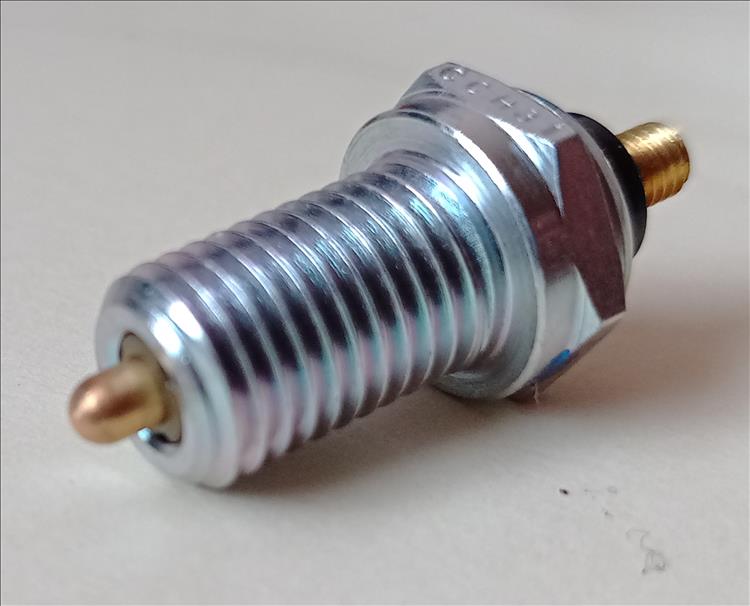 03/07/2024 12:54:36 UTC
03/07/2024 12:54:36 UTC
Ren - The Ed¹ said :-
I *suspect* the lump circled on the back of this selector drum is possibly the bit that comes into contact with the brass pin of the neutral switch. I CAN NOT get decent images or diagrams of the crankcase etc to work out if I am correct or not. No, I am not dropping my engine and splitting the crankcases to find out thank you.
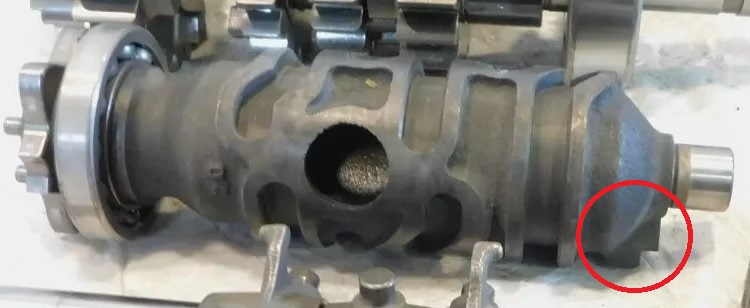 03/07/2024 13:00:07 UTC
03/07/2024 13:00:07 UTC
Ren - The Ed¹ said :-
It's hard to make out but the parts diagrams seem to show a "nub" in the casting that could connect to the neutral switch.
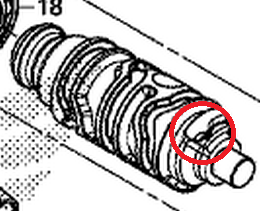 03/07/2024 13:08:33 UTC
03/07/2024 13:08:33 UTC
Ren - The Ed¹ said :-
So when not in neutral the spring loaded brass pin of the neutral switch is floating in the engine. As the selector drum rotates to neutral the nub, the bit of metal on the selector drum comes into contact with the spring loaded brass pin - thus completing the circuit.
Now - if the brass pin has - for example - 2mm of movement but with the thick washer the nub of the selector pushes it in 0.3mm. Over time the brass wears and we end up with the selector nub barely touching it. Put in a washer 0.5mm thinner allowing the pin to get 0.5mm closer and connection can be made again.
But nothing it that simple. It is also PERFECTLY possible my removing and reinstallation of the switch has simply cleaned a dirty connection where the wire attaches into the threaded brass section. Who knows.
03/07/2024 13:15:08 UTC
nab301 said :-
Ren , the thread you linked to describes the switch as having variable resistance (which is strange) and the brass end as being sacrificial so I think you can safely say that you've sorted the problem.
Nigel
03/07/2024 14:17:20 UTC
Ren - The Ed¹ said :-
My gut tells me that's wrong. I also saw suggested that the brass pin when pushed in makes contact (like a push button) which my multimeter disagrees with. I also saw the other way around on a different forum, when the pin pops out it makes a contact that tells the computer its not in neutral.
03/07/2024 14:21:10 UTC
Paul said :-
Hi Ren
I'm a frequent reader, but alas brand new contributer.
I have the same age CB500X as you and in fact the same colour, with @ 20k miles. It's been by far, one of my best buys bike-wise.
Like you, I noticed that the start up was not as snappy and at 6 years old, I checked the battery and replaced it, thinking that would be the cure.
Having read your experiences with the neutral switch, I replaced mine and the difference was remarkable.
I should have taken a picture of the old one, as it looked as if it had been filed to a point on 2 sides.
Many thanks!!
16/04/2025 16:41:35 UTC
Upt'North ¹ said :-
Paul....what have you done?
Please don't thank Ed, he's only here to be abused.
Welcome.
Upt.
16/04/2025 17:11:45 UTC
Ren - The Ed¹ said :-
Hi Paul - I'm glad you've sussed your issue and I too replaced the battery thinking it was on it's last legs. As stated in the post I can't take credit for this nugget of wisdom - it comes from various CB500X, CBR500R and CBF500 forums.
As for you Upt'North! It makes a refreshing change to know this 'ere 'umble blog has helped at least one person. I suppose I could argue it's helped you 'orrible lot too by providing an outlet for your frustrations by abusing me. And if you're abusing me you're leaving some other poor soul alone. Pfffffffft!
17/04/2025 07:49:37 UTC
Paul said :-
Upt'North & Ren
A big thank you for your welcome.
All of you regulars do a superb job. I must try to dream up a contribution.
The articles remind me of those found in 'Motorcycle Sport' of the 70s/80s era. I did enjoy them.
I hope that comes across as a compliment!
?
17/04/2025 19:17:40 UTC
Ren - The Ed¹ said :-
In the 70's and 80's I was at school Paul and my preferred 2 wheel transport was my BMX. I had no notions no pretentions to motorcycling until '89. As such I know nothing of "Motorcycle Sport". I'm sure one or two of the other regulars on here can tell me whether or not being reminiscent of Motorcycle Sport is a compliment... or not!
18/04/2025 07:58:15 UTC
Upt'North ¹ said :-
Motorcycle Sport Magazine was a good'un, I think it became Motorcycle Sport and Leisure. If you cast your cold camping muddled head back Ed I had my original Portugal trip published in it.
This might all be wrong of course, Ian will know.
Upt.
18/04/2025 09:53:40 UTC
Ian Soady¹ said :-
I subscribed to MCS from the mid 1970s till about 2000 when it lost its way somewhat. I kept them all until moving house 5 years ago when I passed them on to Pete Crazyfrog who I think gave them to his local bike club after ploughing through them. It was indeed an excellent magazine but with some odd features, like starting an article on one page then having the tail end somewhere else. But apart from that it was a very good read, where the readers' letters were actually better than many of the articles. I still read the digital version courtesy of my local library but there is little of interest in it for me. I certainly wouldn't buy it.
I recently found out who the venerable "One Track" was - but it was someone I'd never heard of.
I don't remember Upt's Portugal article though as I wouldn't have known of him at the time probably just passed it by. I did submit my story of riding my Commando to Greece and back but it was met with stony indifference - indeed completely ignored. It was eventually published by the now defunct British Bike magazine - and they even paid me £100. Eventually. Maybe it was that that finally sent them under.
18/04/2025 10:09:57 UTC
Upt'North ¹ said :-
I got a free 12 month subscription Ian but to be honest it was a PITA.....
Less words please.
More pictures please.
More words please.
Less pictures please.
I'm sure you know the crack.
Upt.
18/04/2025 12:46:42 UTC
Upt'North ¹ said :-
Ed might find it on here somewhere Ian in the archives?
To be honest, again, the finished article isn't what I set out to write. Just what they wanted.
Pffffffftttttt.
Now time to get back to BH integrated dishwashers replacement. Oh the glamour.
18/04/2025 12:48:47 UTC
Ren - The Ed¹ said :-
I don't seem to have a Portugal trip for yourself in the archives Upt'? Integrated dishwasher? Oh my how the other half live.
21/04/2025 17:19:07 UTC
Upt'North ¹ said :-
Did I dream I went to Portugal?
Thinking......
Pffffffftttttt.
22/04/2025 11:13:48 UTC
Ren - The Ed¹ said :-
It's possible you went - ask 'Er Indoors she'll know. It's more likely you spent all that effort writing it up for Motorcycle Sport and the trauma of dealing with me has made an incorrect connection in your noggin.
22/04/2025 11:57:03 UTC
Ian Soady¹ said :-
Last night I dreamed I went to Manderley again.....
23/04/2025 14:16:35 UTC
Roscoe said :-
Great blog! My 2017 CB500X with 26k kms has all the above mentioned symptoms: side stand down and in neutral - crank, but no start, regardless of clutch being pulled or not. Kick stand up and in neutral, starts regarless of clutch pulled in or not.
But to add to the confusion - maybe it has to do with it being a weird orange CB - when I ride a couple kms and get everything warm, it starts with a tap on the starter button - while on it´s sidestand, in neutral and without the clutch lever pulled. Could this further confirm that it´s the neutral switch? Maybe the copper pin makes better contact after being rubbed a couple of times?
10/09/2025 15:22:25 UTC
Ren - The Ed¹ said :-
Now mine always started fine no matter the situation when it was warm Roscoe. I'm no electrical engineer but I reckon it's to do with ohms and amps and voltages and stuff. The correct advice is simply to replace the neutral switch and washer to see if it fixes your issue. A genuine Honda one seems to be around £28 (part number 35600MK4860) and washer (90443MJ6000) about £2.
Of course the neutral switch is as common as muck and there are TONS of aftermarket ones that will likely be just fine. I'm quite sure you'll find copper washers too at a DIY store.
10/09/2025 20:12:48 UTC
Roscoe said :-
I guess I´ll have to try and see. Thanks for the great post!
11/09/2025 11:41:49 UTC
Roscoe said :-
To Ren and anybody else interested - I replaced the neutral switch and it fixed the issue. Thanks again for the great write-up.
02/12/2025 13:33:36 UTC
Ren - The Ed¹ said :-
Good news Roscoe - glad you got it sorted.
02/12/2025 16:00:18 UTC
Name
Comment
Add a RELEVANT link (not required)
Upload an image (not required) -
Uploading...
Home
Repair And Restoration